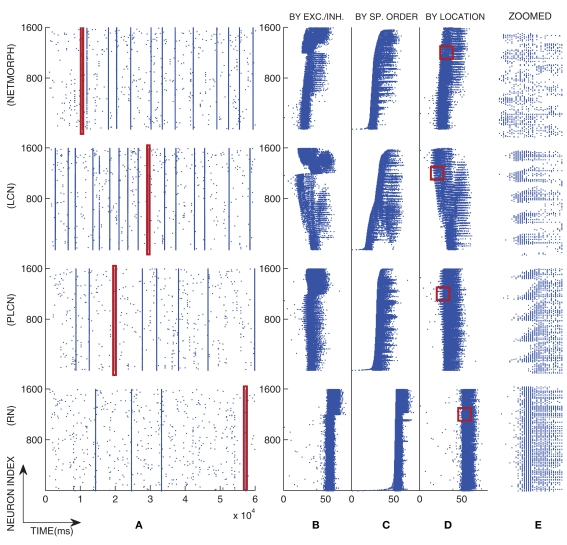Figure 2.
An example of population spike trains of four different networks with a selected burst magnified. The distance-dependence factor W = 1 is used in the PLCN network. (A): The full population spike train, (B–D): The spiking pattern of the selected burst illustrated by different orderings of the neurons, and (E): The selected region in (D) magnified. In (B) the neurons are primarily ordered by their type and secondarily by their location in the grid such that the lower spike trains represent the excitatory neurons and the upper spike trains the inhibitory neurons. In (C) the neurons are ordered by the time of their first spike in the selected burst, i.e., the lower the spike train is, the earlier its first spike occurred. In (D) the neurons are ordered purely by their location in the grid.

